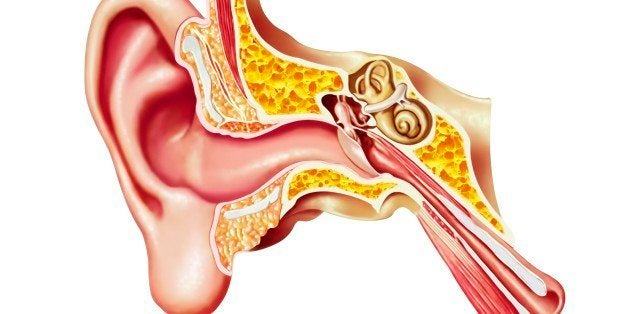
By Dina Fine Maron(Click here for the original article)
Using sensors tucked inside the ears of live gerbils, researchers from Columbia University are providing critical insights into how the ear processes sound. In particular, the researchers have uncovered new evidence on how the cochlea, a coiled portion of the inner ear, processes and amplifies sound. The findings could lay the initial building blocks for better hearing aids and implants.
The research could also help settle a long-simmering debate: Do the inner workings of the ear function somewhat passively with sound waves traveling into the cochlea, bouncing along sensory tissue, and slowing as they encounter resistance until they are boosted and processed into sound? Or does the cochlea actively amplify sound waves? The study, published in Biophysical Journal, suggests the latter is the case.
The team, led by Elizabeth Olson, a biomedical engineer of Columbia University, used sensors that simultaneously measured small pressure fluctuations and cell-generated voltages within the ear. The sensors allowed the researchers to pick up phase shifts—a change in the alignment of the vibrations of the sound waves within the ear—suggesting that some part of the ear was amplifying sound. What causes that phase shift is still unclear although the researchers think the power behind the phase shift comes from the outer hair cells. Apparently the hair cells’ movement serves to localize and sharpen the frequency region of amplification.
The researchers wrote that the mechanism appears to be akin to a child swinging on the playground. If somebody pushes a swing just once, the oscillations will eventually die out. If a child pumps her legs at certain times, however, it will put energy into the oscillations—that is power amplification at work.
Because of the difficulty of installing sensors in the inner ear—it is easy to cause complications, including bleeding, which impacts the sensors—the study used only a small number of gerbils. Olson says replicating these results on a larger number of gerbils would be very challenging.
Although the research won’t immediately lead to new hearing aids, it does provide insights into the mechanics of the cochlea, which is essential for being better able to simulate its function. “The most significant aspect of the team’s results is it eliminates certain models and it guides us toward building better models of the cochlea,” says Stephen Neely, an electrical engineer specializing in hearing of the Boys Town National Research Hospital in Omaha, Neb. That, in turn, has clear implications for future cochlear implants, which bypass the middle ear, delivering electrical signals directly to the cochlea.
Better understanding of exactly where sound waves should hit the inner ear should also eventually improve hearing aids, which send sound through the middle ear. If a person has blurry vision and you turn up the lights, they’ll just see a much brighter blurry image. Today’s hearing aids now essentially turn up the lights. Better cochlea models could make it possible to focus sound more precisely within the inner ear, theoretically making it possible to both amplify and sharpen hearing.